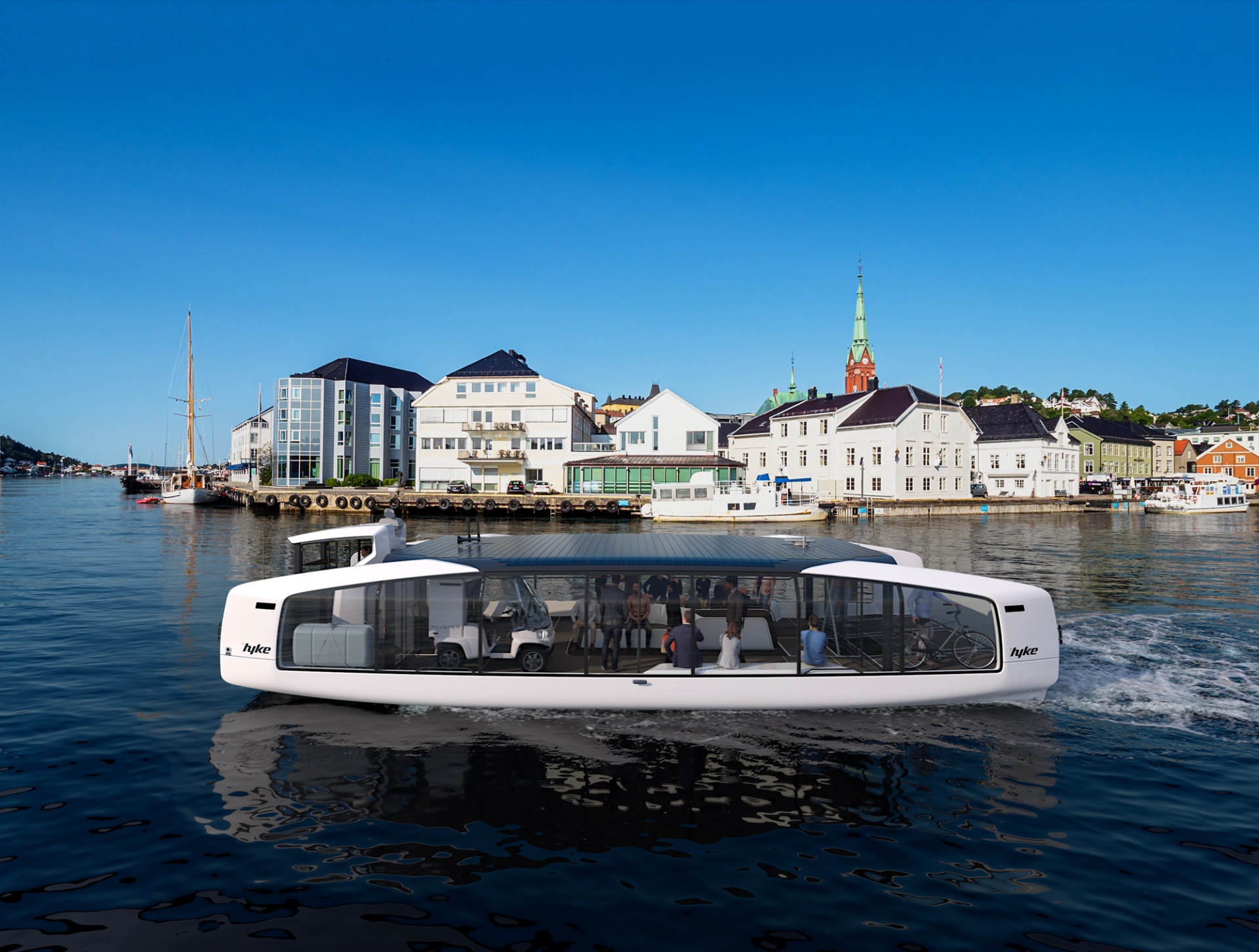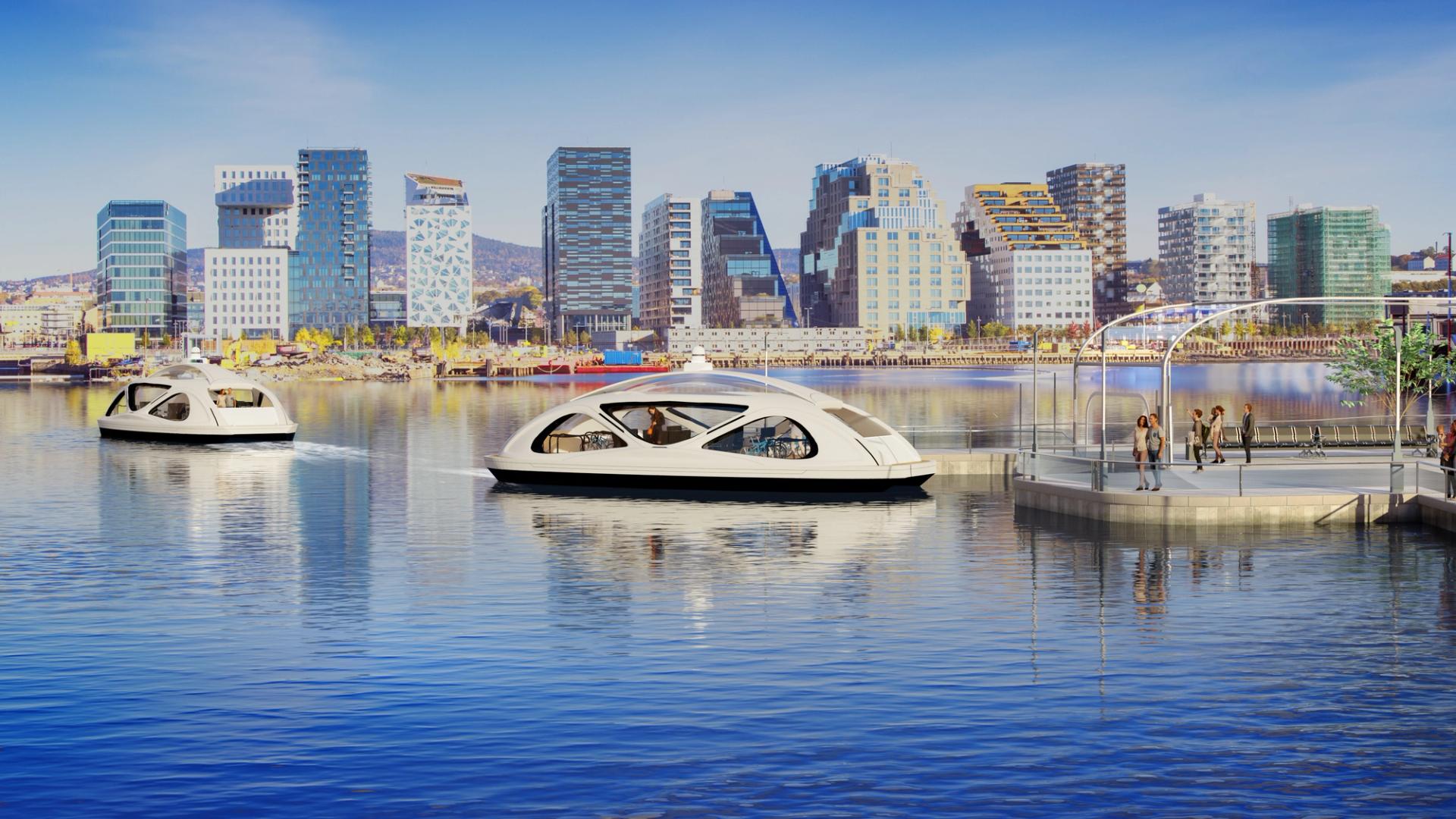ZAWAS rethinks city mobility with green, autonomous passenger ferries

This is precisely the vision of the Zero-emission Automated WAter Shuttles (ZAWAS) project, a Norwegian industry collaboration to include waterborne transport in urban mobility systems. The collaboration aims to take Norway’s maritime industry to the next generation by transforming urban waterways into rapid, zero-emission, autonomous public transportation transits.
Based on the project, the ZAWAS gateway has been established to highlight Norwegian solution providers for zero-emission water shuttles and to provide ideas, inspiration and understanding of what a water shuttle fleet can contribute to a city’s mobility system.
“Cities will now have the opportunity to provide water shuttles as part of a holistic transport ecosystem.”
Torun Degnes
Former CEO, SAMS-Norway
Reclaiming waterways for passenger transport
Fourteen of the 15 largest cities in the world are coastal. They span the globe from Buenos Aires and Lagos to New York City, Mumbai and Tokyo. “While most cities are near the water, we have forgotten to use water to transport people,” says Torun Degnes, former CEO of SAMS-Norway, the project owner. (Editor’s note: Ms Degnes is now the CEO/Business Advisor at Innovation and Systems Design.)
The historic shift occurred when cars became convenient and relatively inexpensive. Urban dwellers preferred to drive on city streets rather than take a waterborne vessel. Over time, the global obsession with cars has created the urban traffic congestion that ZAWAS seeks to solve.
“Now we can go back to utilising the water infrastructure, which costs much less to maintain. In our view, the waterways are there to be revitalised,” says Degnes.
Read more about ZAWAS: The cost-efficient, environmentally friendly future of public transportation in urban areas.

Revitalising urban waterways easier said than done
A few autonomous electric ferries are operational today, most notably the MF Estelle, the world’s first such ferry developed by several Norwegian companies: Brødrene Aa ferry designer and builder, Torghatten transport service at sea, and Zeabuz maritime autonomy solutions. This ferry now runs regularly in the Stockholm area.
However, an entire fleet of autonomous passenger ferries does not currently exist. To make this happen, many pieces of the puzzle must come together. This is where ZAWAS comes in.
“ZAWAS is primarily a platform that gathers Norwegian industry actors working with zero emissions and autonomous technologies. Sometimes they collaborate; other times they compete. But they all require coordination at some level.”
Håvard Tvedte
Head of Market Development and External Relations, Maritime CleanTech
Starting with the vessels themselves, ZAWAS envisions development of silent, zero-emission, attractive shuttles that enhance the well-being of both humans and the environment.
To achieve this, however, the shuttles cannot be ordered one by one, as is the case with ferries and ships today. Water shuttles must be produced at scale, much like buses and other public transport vehicles, to increase efficiency and lower costs.
Autonomous ferry technology just the first step
According to Degnes, the vessels are the “easy” part, so to speak. The bigger challenge is to integrate water shuttles into a city’s land-based mobility system. She explains further:
"To achieve a resource-efficient and attractive autonomous mobility service, we must take a holistic view. In addition to fleets of shuttles that are well integrated with land-based mobility, we need appropriate industry and government guidelines and access to the city’s power grid and charging infrastructure. We must also ensure that shuttle operations are sustainable and economically sound."
An urban mobility system must be seamless, as commuters will likely need to combine different forms of transport. For example, a person might take a train to the water shuttle, which would then carry her to her final destination. In order for this to succeed, people must feel that water shuttles make their trip faster, more convenient and more pleasant.
Complete autonomous ferry value chain
“Norway has a complete ecosystem to offer the global market.”
Torun Degnes
CEO, SAMS-Norway
This includes providers of autonomous zero-emission technology, shipbuilders, charging station developers and charging infrastructure suppliers.
“This comes from our decades of experience in developing autonomous solutions for the offshore and subsea industry. We already have the technology platform, competence and knowhow for designing autonomous vessels and integrating them into more complex systems,” she points out.
Moreover, Norway has a complete maritime ecosystem with world-leading companies delivering advanced technology, digital solutions and low and zero-emission vessels. It also has extensive experience with international industrial collaboration and testbeds where the technology can be piloted.
Promising international technology transfer
The ZAWAS project is comprised solely of Norwegian partners, both public and private. This is a testament to Norway’s strength in many relevant industry areas, represented by the three project initiators: Maritime CleanTech, a cluster for clean maritime solutions; Nordic Edge, an innovation cluster for smart and sustainable cities; and SAMS-Norway, a business cluster for autonomous mobility and transport systems.

The private companies involved are Applied Autonomy, Blueday Technology, Brødrene Aa, Hyke, Maritime Robotics, Massterly, MHTech, SEAM, Simonsen Vogt Wiig, Unplugged, Zeabuz and ZEM. A number of public sector partners and research institutions are involved as well.
“The outcomes of the ZAWAS project will be transferable from small urban shuttles to tourist ships and other vessels. This will be an international market, and Norway promises to be a frontrunner,” concludes Tvedte.


